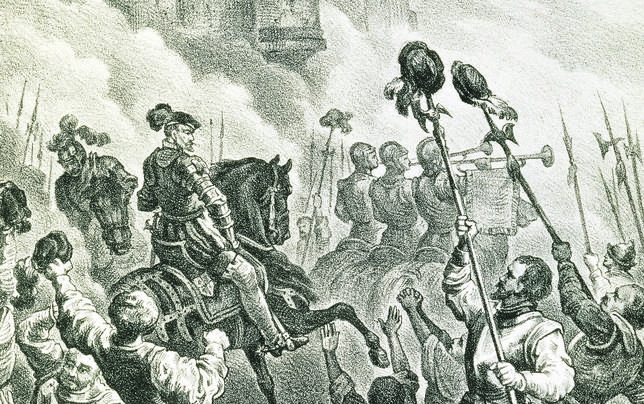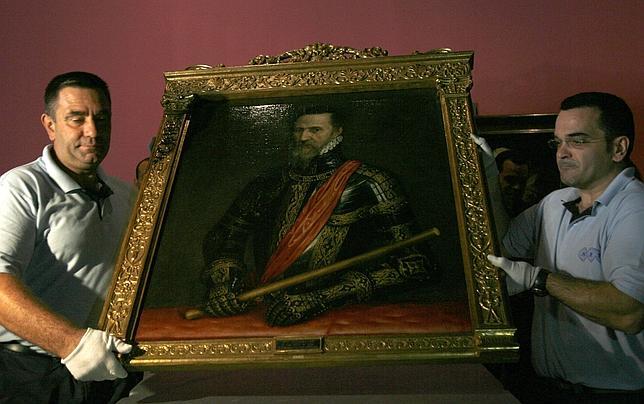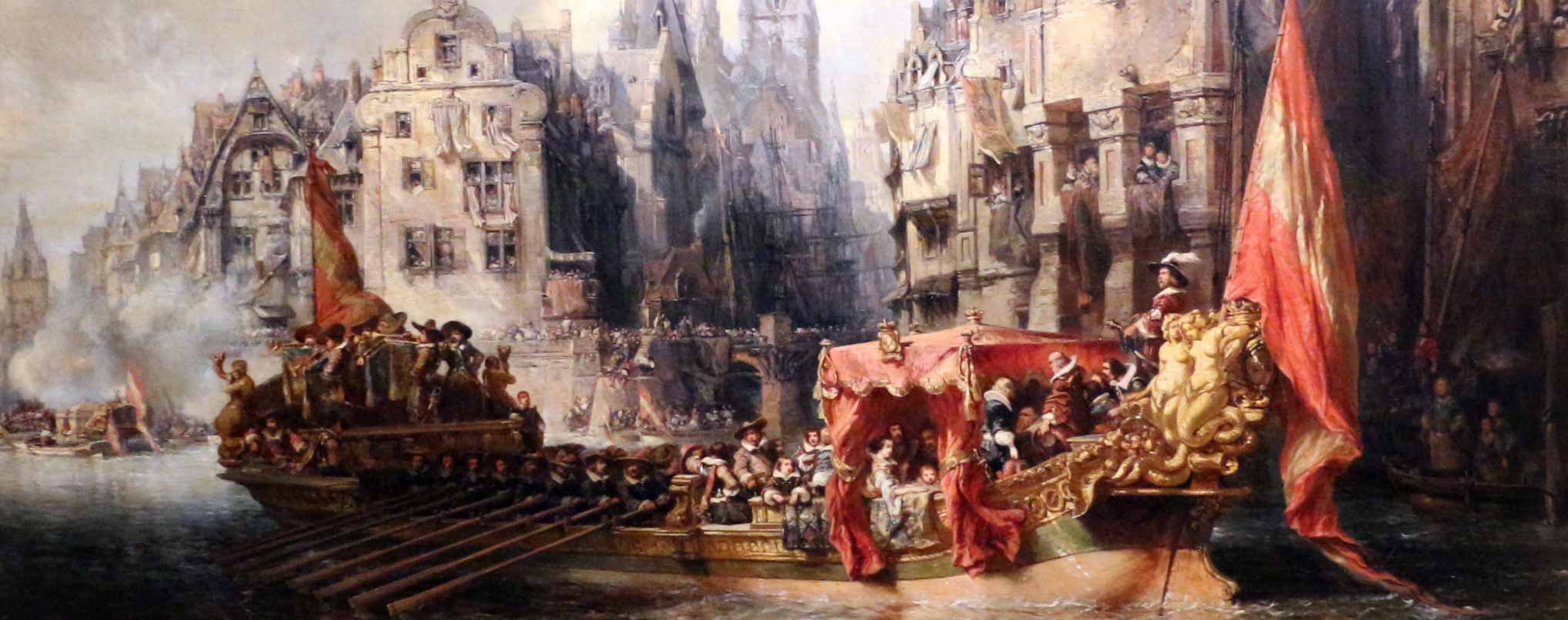Source:ABC
The Turk, the Moor, the Lutheran hosts, or Portugal trembled at the passing of the man who still terrifies the Dutch children. He always addressed his men as “Gentlemen soldiers …”
Few men in our strenuous history can be proud of having dedicated their entire lives to the homeland from the first to the last and final breath. Thus hour by hour and day by day of the seventy-five years that lived in this land Ferdinandus Toletanus Dux Albanus, said in a more understandable manner Fernando Álvarez de Toledo y Pimentel, at the time the Grand Duke of Alba, one of the greatest generals of history, champion and dedicated captain of our then invincible tercios, supreme commander of our faithful infantry against the Turk, against the Moor, and also against the European heretics, the rebellious Lutheran hosts, who so many times saw on their body the wounds and lacerations that the Duke never stop inflicting on them.
His military ingenuity was in Fernando’s blood, since there were soldiers of ancestry and indomitable courage in his family. And very soon he would also be released on the battlefields, since at the age of six he accompanied his grandfather Fadrique, from whom he would inherit the ducal title, in the siege of Pamplona in 1513.
Then there would not be the boy Fernando, already an orphan for three years, of course brandishing the sword or preparing the shield in his defense, but since he already learned at the gates of the Navarran capital what the sound of the clash of the steels, of the ready cavalry and in order of battle, of that creaking of neighs, armor, and arquebuses, Fernando learned forever what it is to leave his body and blood on the battlefield for this homeland.
He was born in the Avila town of Piedrahita on October 29, 1507
And the unbeatable knight Álvarez de Toledo had to learn a lot, well educated in military doctrine, but also in literacy, that it was not for nothing that one of his main teachers was the great poet Juan Boscán, in that siege in Pamplona, and on those hard afternoons of training in his hometown of Piedrahita, Ávila, where he was born on October 29, 1507, because with only seventeen years of age, in 1524, without family consent, he enlisted with the troops of Íñigo de Velasco, Constable of Castilla, who were preparing to liberate Fuenterrabía, then in French hands.
Huge was then the determination and the courage of Fernando who after the victorious battle was, still a teenager, placed at the head of the beautiful town of Guipuzcoa. As luck would have it, in the fight, the Duke of Alba met one of the great friends of his life, a dear comrade who would be killed so early, the poet and brave ensign Garcilaso de la Vega. Together the already firm leader of the troops of Carlos V and the brilliant bard joined their lives and their weapons. And so they went on until the grim reaper took good old Garcilaso in her arms when he insisted on being the first to climb the assault ladder in the attack on a fortress at Le Muy, in Provence, not far from Nice.
It was October 1536 and on the 14th of that month, the author of the “Eclogues” gave his body and soul to the Lord. In his last moments on this earth, Garcilaso was fortunate to be in the most happy company, that of Francisco de Borja, Duke of Gandía, also a soldier, and who, in a few years would become Saint Francis Borgia, and third General of the Jesuits.
The friendship of Fernando Álvarez de Toledo and Garcilaso passed into the history of camaraderie and also that of literature since the poet on several occasions had the Duke of Alba as the main protagonist of his verses:
In loving fire all burning
the Duke was running and did not stop;
Catalonia passed, behind it’s left
and from Aragon he leaves, and in Castile
without leaving the chair, his feet lay.
The heart disposes of the joy
that he had close, and calms
his face and the beauty of his eyes
death, damage, anger, blood and war;
with only love he keeps himself without respect, and the loving afect and ardent zeal
figurative and present is in the face.
But behind would be left that friendship between the soldier and the poet-soldier, the Duke of Alba still had his whole life ahead and all his life since devoted to serve their kings, first Carlos, then his son Felipe, in the highest services and undertakings, the most self-sacrificing endeavours, and not always treated with the honor he deserved, since on more than one occasion he was removed from the Court for those struggles and tricks that are always so welcome with politics. But always present in his life the legend that he chose as his motto: “Deo patrum notrorum”, in Latin, and in Spanish “To the God of our fathers.”

Engraving that recreates the taking of Lisbon by the Grand Duke of Alba (1580)
Tall, lean, sallow-skinned, severely austere, tough, fierce, despotic at times, the black legend has brought us the image of the creator of the Council of Troubles to punish the Protestants of the Netherlands, and that terrible name that was invoked at night in front of the children as if he were the Coco or the Bogeyman if they did not fall asleep. “Sleep, child, otherwise the Duke of Alba will come and take you”.
But, for us, Don Fernando Álvarez de Toledo y Pimentel, and for those who see history with greater objectivity, he was a very brave general and a very successful strategist, one of the first great captains of the brave tercios. And do not forget here, the enthusiasm and fervor that the Duke had among those bearded soldiers, veterans of all trenches, hardened and battered by wounds and scars, whom he always referred to with a “Gentlemen soldiers …”, before that they had to go into fierce combat.
First, he signed up among the people who, encouraged by Carlos V, went to fight against the Ottomans, in the siege of Vienna, back in 1532, then to fight against the pirate Barbarossa on the shores of Tunisia, always in the front line, always winning the gallons of captain with his courage and daring. Increasingly esteemed by the emperor who in 1547 put him at the head of his tercios in the fight against the Protestants of the Schmalkalden League, whom he would defeat in the triumphant battle of Mühlberg, which would be forever immortalized by the portrait of Charles on horseback by Titian.
His next service to the country would be as a high-profile diplomat, and thanks to the fact that he was fluent in several languages, which made him the perfect person to accompany Felipe II on his trip to England when the young Felipe married Maria Tudor.
Our Duke was one of the fifteen Greats of Spain who attended the ceremony at Westminster Abbey, which took place on July 25, 1554. And shortly after, back in arms when Fernando was sent to Italy, where the French had drawn steel again. The Duke was Captain-General, Governor of Milan, and Viceroy of Naples.
Even with Pope Paul IV Álvarez de Toledo quarreled, at the gates of Rome, where he would enter as the most singular winner in September 1557. A few years of peace came, which Fernando spent in Spain, both at court and living in his Castilian lands. However, in 1566 the Protestant enemy had not lost his warring spirit and rioted again in the North, in the Netherlands. And up there the brave Duke of Alba went.
The Netherlands Campaign
The Lutherans had set fire to numerous Catholic images and Felipe II could not allow it. And Fernando was his man again. On August 22, 1567, he entered Brussels, and shortly afterward our singular compatriot set to work to do justice by creating the Council of Troubles, so much talked about by the black legend, that it is even said that heretics preferred to call it Council of Blood.
The stakes were not low, and the Duke of Alba was adamant about the rebellion. The executions of Protestant nobles and even some former allies now past God knows how to the ranks of Luther were not lacking. It is said that the Duke himself witnessed the execution of the enemies, no doubt to cause even more fear among them. But there was no maravedí with which to pay for the military effort and the Duke of Alba raised taxes on enemy cities. The uprising was total, as was the Spanish response, in events as terrible as the sack of Mechelen and the taking of Haarlem, the most frightening moment of that no less devastating war.
In Lisbon, he lived his last two years of life as First Viceroy of Portugal
Fernando himself would not come out of that carnage well, because in the court of Felipe II the terrors lived in Flanders were recounted, and at that time the king dismissed the Duke of Alba, sending Luis de Requesens to replace him. For Fernando, things were getting worse and he ended up exiled in Uceda.
But his fame as a legendary patriot and soldier earned him rehabilitation. He was 72 years old, and in 1580, King Felipe II asked him for a new effort: he had to cross the Portuguese border and conquer the Lusitanian land for His Catholic Majesty. And Álvarez de Toledo did not fail. He won the battle of Alcántara and occupied Lisbon. Felipe could already be named Felipe I of Portugal. Fernando Álvarez de Toledo y Pimentel lived the last two years of his life as First Viceroy of Portugal in the Lisbon capital.
On the banks of the river Tajo and the Atlantic, the Duke of Alba died on December 11, 1582. There they died seventy-five years given to the motherland, there remained a life always consecrated to our Monarchy, to our Religion, and to Our Spain. Farewell, Duke of Alba, you are already in the heaven of the patriots next to Garcilaso de la Vega, who so Castilian and beautifully named you and drew you forever:
The treatment, the upbringing, and kindness,
the sweetness and well-off simplicity,
the secluded and generous virtue.

Titian’s Grand Duke of Alba in an exhibition in Seville in 2009
Share this article
On This Day
- 1528 Prince Felipe is sworn as heir to the Spanish kingdoms in Madrid.
- 1593 The city of San Salvador de Jujuy (Argentina) is founded by Francisco Argañaraz y Murguía.
- 1776 Battle of Lexington and Concord (United States).
History of Spain
26 August 2020
27 January 2021
Communism: Now and Then
23 December 2022
28 July 2021






